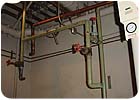
Figure 1. Piping left after hot water tanks were removed.
Minimizing dead legs in domestic water plumbing is perhaps the most widely recommendedLegionellapreventive measure, yet the advice is usually given without even defining "dead legs,"
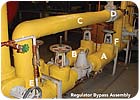
Figure 2. Both regulator lines (A and B) should be kept open, or flushed before use. The domestic water system is exposed to stagnant water in the bypass line (C) because of the dead segments between valve D and the tees at E and F. Also, the line cannot be flushed to waste without adding a drain and another valve.
1. Remove dead-legs.AlthoughLegionellabacteria in dead legs can contaminate an entire domestic water system, the presence of dead legs does not necessarily mean there will be aLegionellaproblem, nor will removing them necessarily solve one. Before removing a dead leg, consider the benefits versus the cost. Some dead legs present a greater risk than do others. Some are expensive to correct; others are not. The following rules are good practice:
a. Remove accessible dead legs.In equipment rooms and other areas where dead legs are accessible, the cost of removal will typically be minimal, so remove them. For example, if water heaters are abandoned, remove all the piping associated with the installation to the point of flow, rather than simply capping the lines (seeFigure 1).
b. Establish a policy of removing dead legs during plumbing renovations.This should be added to any project specifications.
c. If a dead leg cannot be removed without tearing out a wall, then leave it in the wall but cut and cap it where it tees into the main.For example, if a sink is removed, cut and cap the water lines serving the sink where they tee into the main, rather than at the wall.
d. If a dead leg is not accessible, and it cannot be cut at the main, then try other methods of controllingLegionellabacteria before going to the expense of tearing out walls to remove dead legs.The cost of removing dead legs that are behind walls may not be justified without knowing if you have aLegionellaproblem, and that removal of the dead legs will solve the problem. (It probably won't.) If water tests indicate thatLegionellabacteria are under control in your facility, then the expense of removing inaccessible dead legs is probably not warranted. IfLegionellabacteria is not under control, then continuous disinfection (e.g., copper-silver ionization or chlorine dioxide) will likely be more practical and effective than tearing out walls and removing dead legs (see "e."
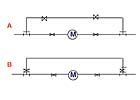
Figure 3. Design A exposes the domestic water system to stagnant water between the tees and the bypass valves, but design B does not. Also, design B allows the bypass to be flushed to waste by opening the upstream valve, closing the downstream valve, and opening the drain. Flushing the bypass before use is critical, especially since bypass lines may go years without use, harboring foul water that can contaminate an entire domestic water system.
3. Keep backup lines open, or flush them before use.For water lines that split into two branches and then come back into one (e.g., to have a backup), both branches should ideally be kept open at all times (seeFigure 2). If one branch is valved off, it should be flushed thoroughly to the drain before each use, so that none of the potentially contaminated water is distributed to the building. This may require adding a valve and drain at the downstream end of each branch.
4. Design bypass lines to minimize the domestic water system's exposure to stagnant water, and flush before each use.(SeeFigures 2 and 3.)
5. Use all pumps regularly, preferably everyday.If two pumps are installed on the domestic hot water return line, but only one is operating at a given time, they should ideally be rotated so that neither is offline for more than 24 hours (seeFigure 4). The same principle applies to cold water booster pumps, alternating the lead pump accordingly. Stagnant water in idle pumps and the piping associated with them can provide a habitat forLegionellaand other bacteria that can enter the system when the pumps are turned on.
6. Flush vacant buildings, floors and rooms regularly.If a building or wing is completely out of use, requiring no water, the water system serving it should ideally be valved off and drained. On vacant floors with undrained systems, an employee in generally good health should periodically-at least twice a week, but preferably daily-run water at all outlets at full flow for 30 seconds and flush all toilets. This applies also to infrequently used sinks, showers or toilets in rooms that have been converted from patient to office or storage use (occupants of these rooms should be encouraged to operate the fixtures daily). Prior to assigning a hospital patient or hotel guest to a room that has been vacant for three or more days, an employee in generally good health should run the cold and hot water at each faucet and shower at full flow for at least two minutes and flush the toilets. For new hospital construction, consider electronic mixing valves for faucets and showers, which were recently introduced by Armstrong International Inc. After approximately 12 hours of inactivity, these valves will automatically run the hot and cold water for a few seconds at a safe temperature.
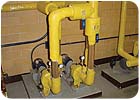
Figure 4. Unless one of these hot water recirculation pumps and its associated piping is removed, both should be operated all the time, or rotated regularly.
8. Store water for no longer than 24 hours.If hot water storage tanks are used, or if tank-type water heaters are used in lieu of instantaneous heaters, then design and operate the system so that water remains in the tanks for no longer than 24 hours. The same is true for cold water storage tanks, unless they are treated.
9. Use water heaters daily.Even semi-instantaneous water heaters hold enough water (about 20 gallons) to pose a problem (seeFigure 5). If removing backup water heaters is not a reasonable option, then they should be used regularly, preferably daily. If they are not used, they should be drained and isolated from the rest of the system, and disinfected before use.
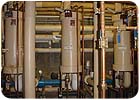
Figure 5. The heater on the right serves the lower floors of the building, the heater on the left serves the upper floors, and the one in the middle is a backup. This arrangement presents two problems. First, even if the middle tank is valved off, its piping leaves dead legs that expose the two operating tanks to stagnant water. The dead legs are short, but could still provide a habitat for bacteria. Second, stagnant water in the dead piping that is isolated with the middle heater, as well as in the heater itself (if it isn't drained), will enter and possibly contaminate the domestic water system when the heater is put into service. If the middle tank is not removed, it should be used full time in conjunction with one of the other two, or else flushed and disinfected prior to each use.
Priortize remedial measures based on a building assessment. Deserving higher priority are measures that either reduce a significant risk, or are relatively inexpensive and should thus be implemented out of good sense. Classify measures as lower priority if the risk reduction benefit is questionable and the cost of implementation is relatively high.